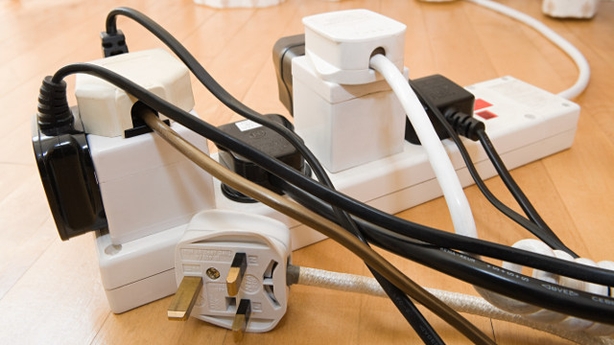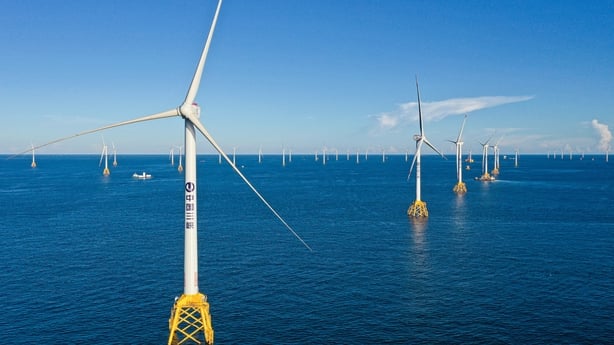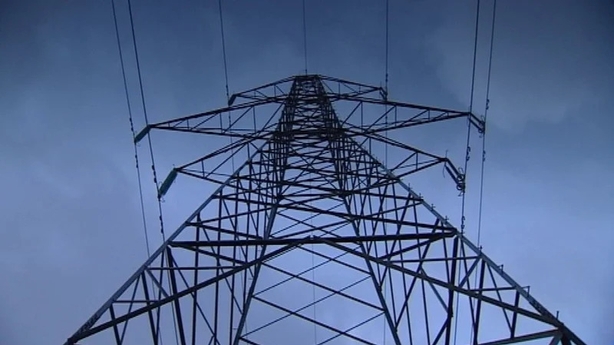This week, the Irish energy market got its first new entrant in three years.
Well, they’re a kind-of new entrant.
Yuno Energy is operated by the company that’s also behind Prepaypower – but this brand will operate on a bill-pay basis.
Most importantly for consumers, it’s arriving with the cheapest energy prices in the country, with a discounted unit rate of 38.04c per kilowatt hour.
"This equates to an annual cost of €1,765 for those on a 24-hour meter with average consumption," Yuno claimed in a statement announcing its arrival.
Individual consumers’ mileage may vary, though, depending on their own usage and the rate they’re being charged by their current provider.
Regardless any talk of lower prices, and anything that might help stoke competition in the market, is undoubtedly welcome.
"Obviously it is good news because more competition usually means more choice for consumers," said Daragh Cassidy, head of communications at Bonkers.ie. "It shows that there is a light, maybe a very dim light, at the end of the tunnel in terms of the energy crisis."
Yuno is able to undercut its rivals because it isn’t burdened by the same hedging deals that others providers blame for their inability to cut prices – despite the fall in wholesale energy costs.
That means Yuno are paying the current wholesale price – rather than one agreed many months (or even years) ago.
And data from the Central Statistics Office this week seems to paint the picture of a very favourable wholesale market at the moment.
Its latest Wholesale Price Index for July indicated a near-18% fall in the price of electricity in the month alone. The wholesale cost of electricity was 64% lower year-on-year, it said.
Watt a difference a year makes

But that doesn’t tell the whole story.
"The CSO figures are very eye-catching and they make a great story, but as with anything it’s 'lies, damned lies and statistics’," Mr Cassidy said. "Yes prices are falling, but they’re falling from really high levels, and a lot of that increase wasn’t passed on to consumers in the first place."
The reality is that, while consumers’ energy prices sky-rocketed last year, they didn’t jump quite as much as the wholesale price did.
That’s because the hedging positions that are currently stopping our prices from falling actually helped to shield us from the worst of the increases a year ago.
As a result, a lot of that 64% fall in wholesale prices was already factored in to the prices currently being paid by consumers.
And that explains why Yuno’s rate – while cheaper - it’s nothing close to a 64% discount on rivals.
Realistically, based on the rates currently being offered by the other energy majors, consumers may be looking at something closer to a 7-12% fall in energy costs if they move to Yuno.
But that still leaves households grappling with higher energy bills than they’d have gotten used to in recent years.
When compared to the 20-22c/kWh that people were paying pre-covid, for example, even the best rate available today is suddenly less impressive.
Meanwhile, compared to consumers in mainland Europe, it’s also clear that Ireland is paying well above the odds even by 2023 standards.
Fresh data from the Household Energy Price Index – compiled for energy regulators in Austria and Hungary – puts the average in European capitals at 26.34c/kWh.
In Hungary itself, the average price paid for electricity is just 9.92c/kWh.
And while there is growing confidence, among politicians and regulators, that other energy firms will soon announce price cuts of their own – there is no hope of us getting anywhere close to those kinds of figures.
In fact, even as old hedging positions expire, it’s unlikely that other providers will be able to go all that much lower than Yuno.
That’s because they’ll be subject to the same wholesale pricing as everyone else in the Irish market.
"If Yuno is coming in with no hedging baggage and the best they can offer is 38c, I can’t see other suppliers being able to go much below that," Mr Cassidy said. "You might see prices of 36-37c, but that is still very, very high."
Generation Why

So why are Irish consumers facing a prolonged period of inflated energy prices?
Energy retailers tend to get the blame – as they’re ultimately the ones sending the inflated bill to households.
But the Irish market is extremely competitive, so there’s every reason for these firms to give consumers the best price they can.
"There’s around 11 energy suppliers in the market at the moment, so we’re not short of suppliers," said Mr Cassidy. "If you think about the number of banks we have, the number of supermarkets we have, the number of mobile phone operators – it’s usually just five or six."
Instead, he puts the focus on the generation side of the industry as the source of the problem.
"There are concerns that maybe the market is dysfunctional and isn’t functioning as well as it could," he said. "But, ultimately, if you want cheaper electricity for households, generators need to be cheaper."
Even before the energy crisis, Ireland’s electricity generation capacity was falling behind.
In 2021, operator EirGrid issued six grid alerts – signalling that the supply coming from generators was struggling to keep up with demand.
That compares to three in 2020 and one in 2017 (there were none in 2018 or 2019).
Last year saw even more alerts issued – and that tightness has continued into 2023, with EirGrid issuing another alert as recently as June.
A tightness in supply means the cost of the energy that is available goes up.
That tallies with the financial results of energy companies, here and across Europe, in the past year.
They’ve tended to show retailers just about scraping a profit – or even recording a loss – while energy generators (which, it should be said, are often a separate division of the same company) bank eye-watering profits.
Slow winds of change

But if constraints on the generation if energy is the problem, the bad news for Irish consumers is that there is no immediate fix coming.
Wind energy – particularly offshore – is Ireland’s biggest hope for boosting the amount of energy being generated here (while also cutting the country’s emissions). There are now multiple, major projects in train too – with a target to triple the country’s wind energy capacity by 2030.
But it will be close to that deadline, at best, before these projects really start to deliver energy to the grid.
And even when they do, the price that they’re due to get for their output is not much better than the current, inflated price that’s being paid for energy.
"Wind isn’t necessarily cheap, if you’re look at some of the prices that are being sold for wind," he said. "Offshore and onshore you’re looking at maybe €70, €80 or €90 per megawatt hour – which is not that far off where prices are at the moment."
Wholesale electricity cost €96 per megawatt hour last month, according to Wind Energy Ireland.
"There’s a miscommunication around this that wind is really, really cheap – it’s not. A lot of these wind turbines, particularly ones far out at sea, are going to need huge investment to get up and running and ultimately that will be borne by the consumer."
Microgeneration from the roll-out of solar panels on more homes and businesses may also help – but that will take time before it becomes a significant factor in the overall market.
And given the limited real estate people tend to have to install panels, most of this kind of generation will also be consumed within the home – rather than being sold back to the grid.
Another major project that should help cool pricing in the Irish market is the Celtic Interconnector.
That will join the Irish grid to mainland Europe, theoretically allowing companies to buy (the currently cheaper) energy from there. It will also allow Ireland to sell energy on to Europe where there’s a surplus generated.
Again, though, there’s a bit of a wait before that becomes a reality. The currently target is to have the Celtic Interconnector operational by 2026.
And all of this comes at a time when demand on the electricity market is growing.
"We have a vastly growing population, we have a growing number of data centres, we’re electrifying our heating systems, we’re electrifying our transport," Mr Cassidy said. "We’re adding a lot of demand, and that is going to put upward pressure on prices as well.
"I think there’ll be a lot of running just to stand still in the coming years," he said.
The one (short-term) silver lining is that the Government has promised further energy supports in Budget 2024.
The scale of those supports may hinge on whether more energy companies announce price cuts before 10th October.








